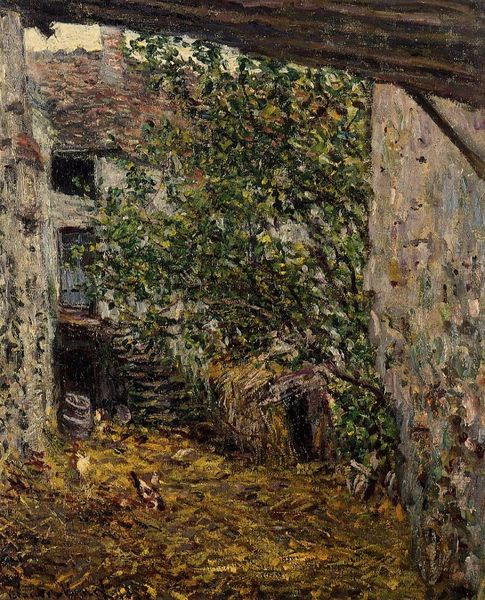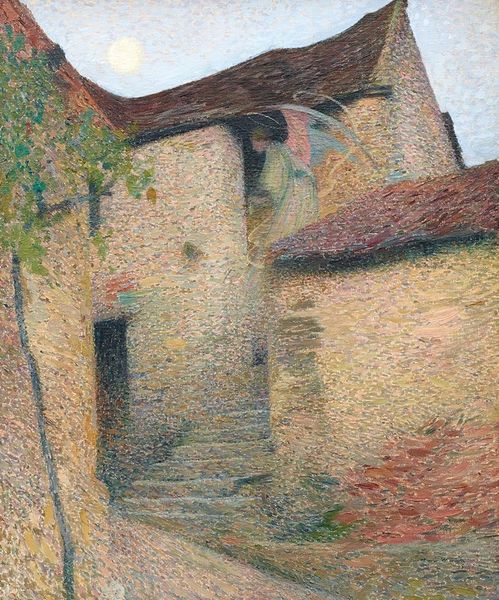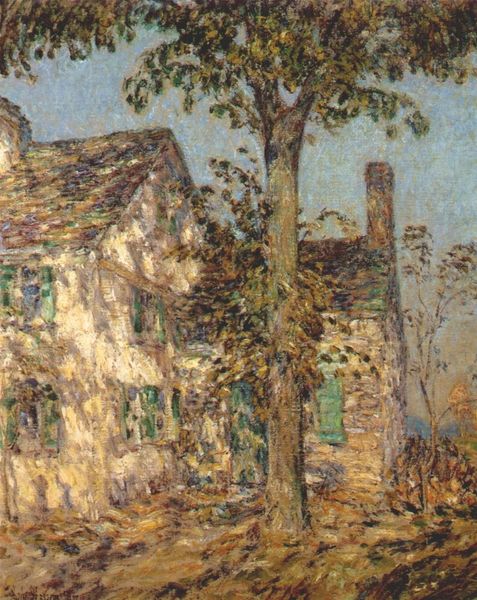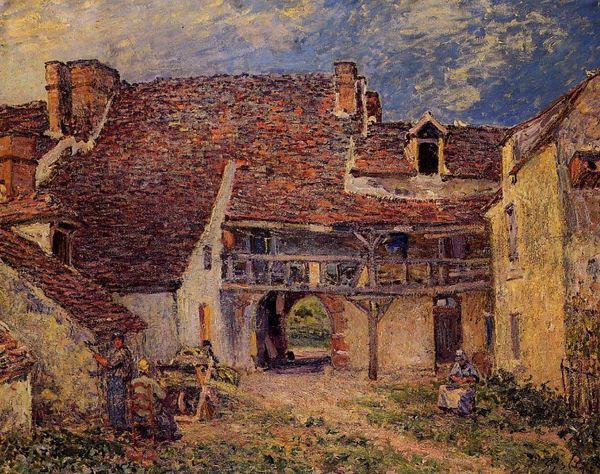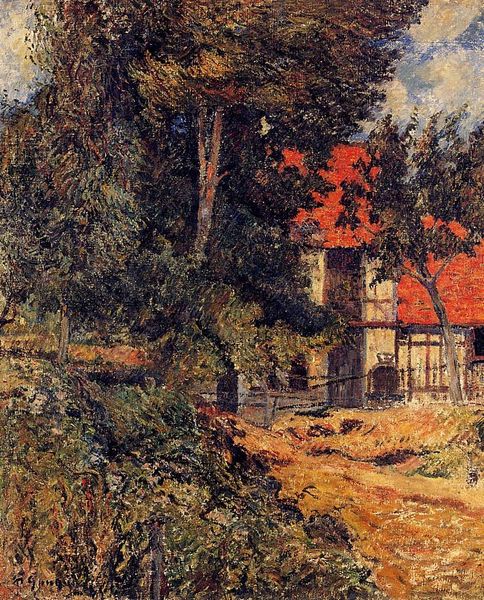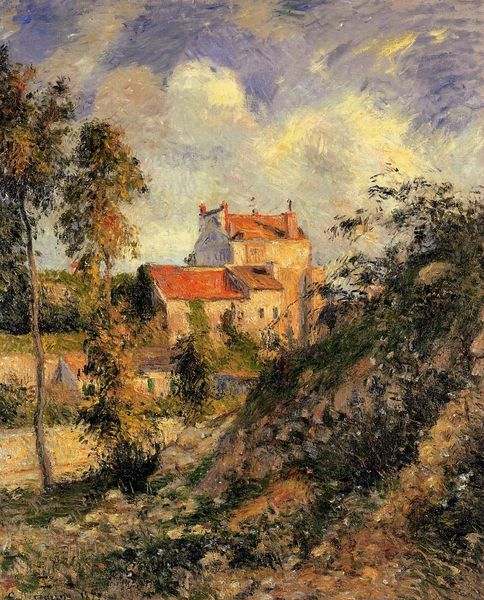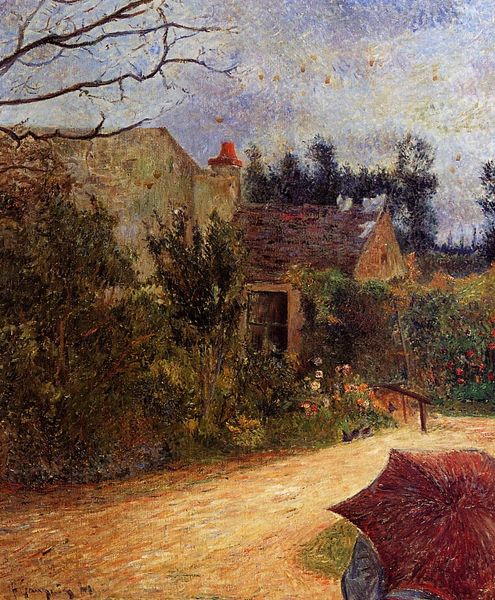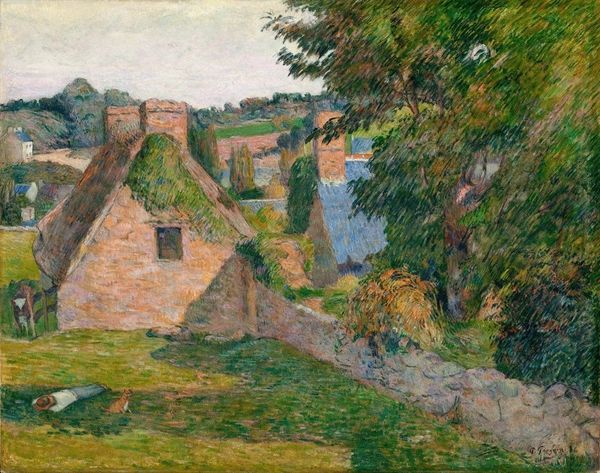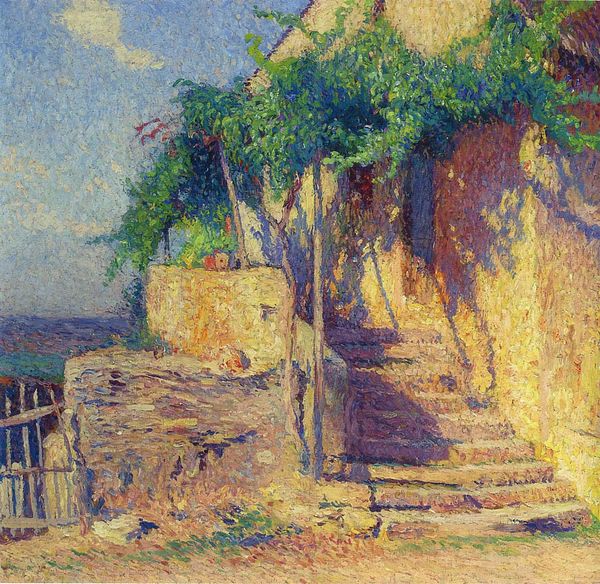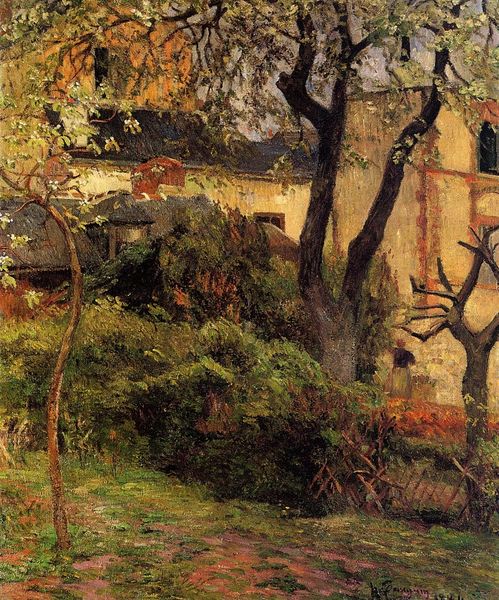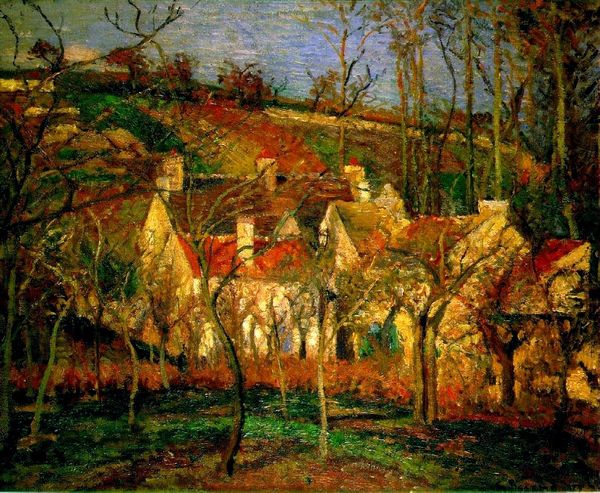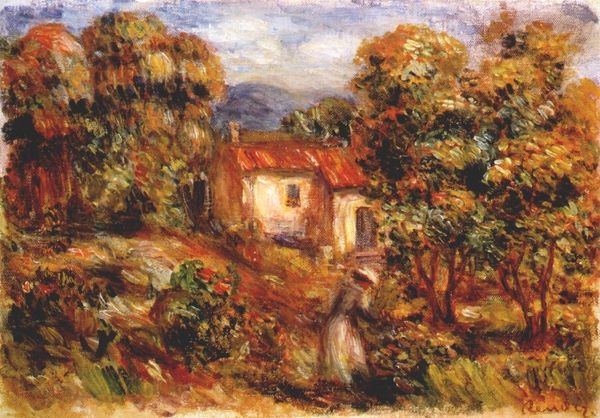
painting, plein-air, oil-paint
#
painting
#
impressionism
#
impressionist painting style
#
plein-air
#
oil-paint
#
landscape
#
house
#
impressionist landscape
#
oil painting
Copyright: Public domain
Editor: Here we have Claude Monet's "The Steps," painted in 1878 using oil paint. The first thing I notice is the texture. The visible brushstrokes really give it a sense of movement and light. It makes the entire composition quite captivating. What do you see in this piece? Art Historian: Indeed, the texture is prominent, as is characteristic of Impressionism. However, beyond the superficial rendering of light, I'm drawn to the formal construction of the scene. Observe the juxtaposition of the geometrical planes of the buildings with the organic forms of the foliage. How does this tension affect your reading of the artwork? Editor: I hadn't considered it like that. The rigid architecture versus the soft foliage creates a lovely contrast... perhaps highlighting the artificial against the natural world? But does it mean anything more specifically? Art Historian: Meaning is a derivative; here, our focus must remain on form. Consider the way Monet uses color to unify the composition, binding both man-made and organic elements in a symphony of warm tones. Does this, perhaps, override the sense of contrast? Editor: Now that you mention it, yes. Despite the architectural versus foliage contrast, the warm tones are what immediately captures attention, creating harmony throughout the scene. Thank you. I'm seeing this in a completely new light. Art Historian: The artwork then becomes not a mere depiction but a meditation on form itself, challenging our notions of perception and representation.
Comments
No comments
Be the first to comment and join the conversation on the ultimate creative platform.
